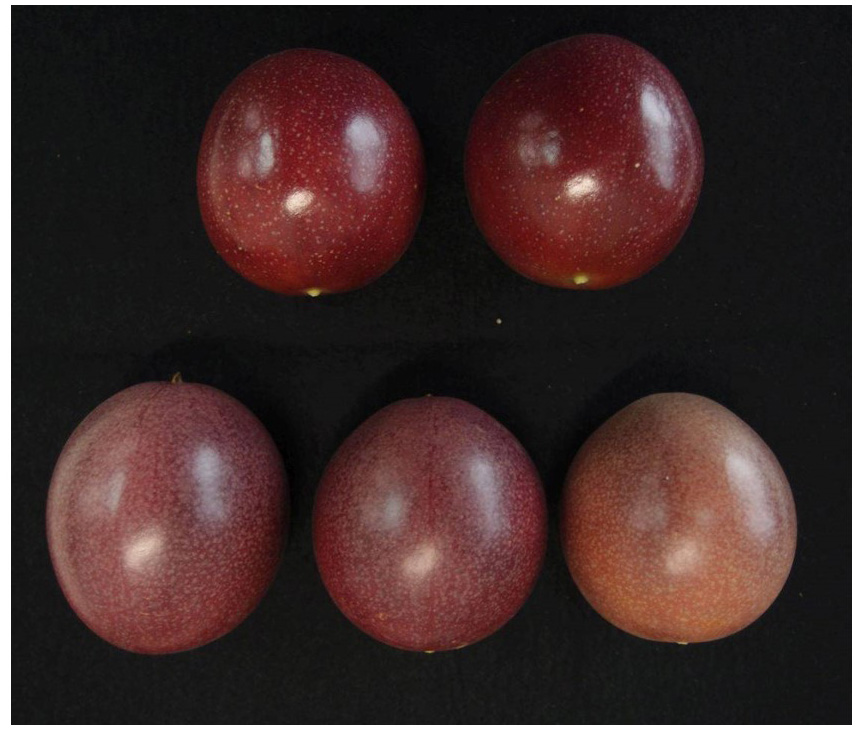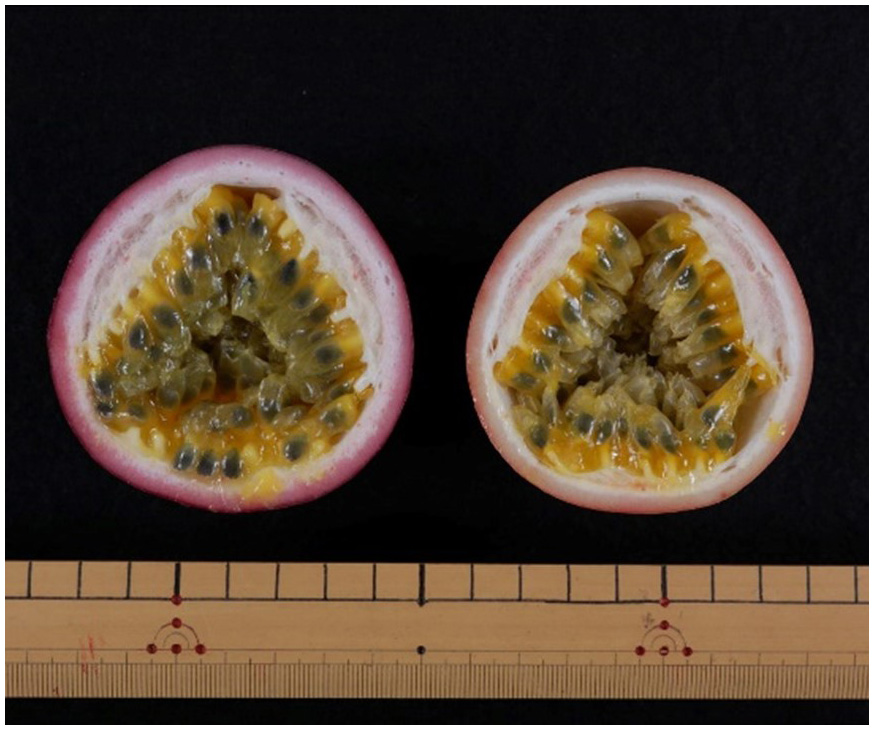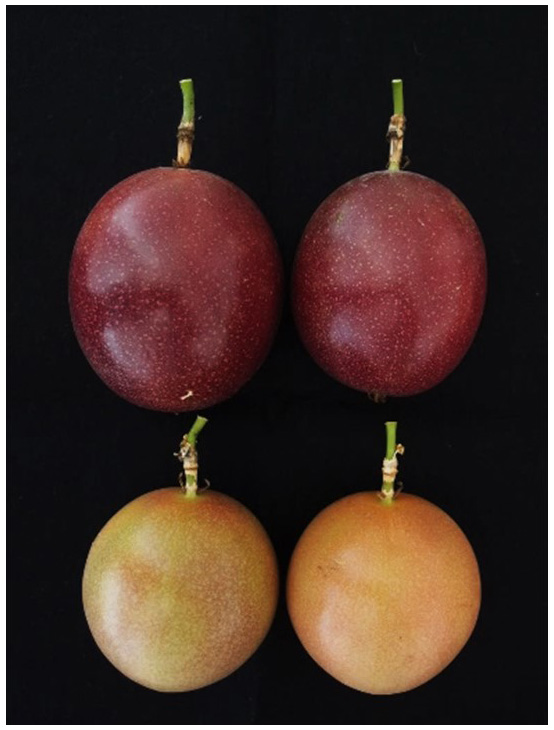‘Sunny Shine’: A new passion fruit cultivar with low acidity and good appearance
Description
In Japan, passion fruit (Passiflora edulis) ranks third in production among tropical fruits after pineapple and mango. It is produced mainly in the southern areas and consumed as fresh fruits, juice, and for processing. Some of the problems with fresh fruit consumption are immature fruit drop during periods of high temperature (above 30oC) and high acidity after harvest. All conventional cultivars that were examined had the same problem.
To cope with these problems, JIRCAS developed the new passion fruit cultivar ‘Sunny Shine,’ which produces fruits that have lower acidity and good appearance. It was selected from seedlings obtained from a cross between JTPF-009 and ‘Summer Queen.’ JTPF-009 is a variety with a non-abscising fruit while ‘Summer Queen’ is a major passion fruit cultivar in Japan. The fruit quality and cultural performance were evaluated until 2015. In 2016, the new cultivar was named ‘Sunny Shine’ and an application for registration was filed (application number: 30972) in accordance with The Plant Variety Protection and Seed Act of Japan.
The average fruit weight of ‘Sunny Shine’ is about 110g (Table 1). The fruit color is red-purple with a smooth and glossy skin (Fig. 1). The matured fruit juice brix is about 18. The acidity of matured fruit juice during high temperature season is 1.5 to 2.0%, which is much lower than that of ‘Summer Queen’ (>2.0%), though there is no difference in juice acidity during low temperature season. ‘Sunny Shine’ has less immature fruit drop than ‘Summer Queen’ during high temperature season resulting in good coloring of the skin (Fig. 3). Days from flowering to fruit drop is longer in ‘Sunny Shine’ than ‘Summer Queen’ (Table 1) probably because it partly inherited the non-abscising characteristic of JTPF-009, resulting in lower acidity and less immature fruit drop. However, the cultural performance of ‘Sunny Shine’ is quite different depending on soil condition. The types of suitable soil and appropriate cultural management for growing ‘Sunny Shine’ are is under examination.
‘Sunny Shine’ is suitable for fresh fruit consumption because of its relatively large fruit size, good aroma, high brix, lower acidity during high temperature season, and glossy appearance. The development of this new cultivar with desirable traits will enhance production and consumption of passion fruit in Japan.
Figure, table
-
Table 1. Characteristics of ‘Sunny Shine’ and ‘Summer Queen’ (2013-2015)
MonthCultivarDays from flowering to harvestYield
(kg/tree)Fruit weight
(g)Pulp & seed
(%)BrixAcidity
(%)Sugar-acid ratio5Sunny Shine620.2713143.117.33.45.2Summer Queen641.3811746.618.02.96.76Sunny Shine652.0011348.3a18.22.2a8.7aSummer Queen622.6211046.8b18.42.8b6.8b7Sunny Shine76a2.04a109a55.1a16.9a1.5a11.8aSummer Queen55b1.11b98b46.8b17.9b2.3b8.1b8Sunny Shine980.3811054.415.51.510.8Summer Queen-------a,b: Different letters indicate statistically significant differences (p<0.05) -
Fig. 1. Mature fruits of ‘Sunny Shine’ (top) and ‘Summer Queen’ (bottom)
-
Fig. 2. Fruit cross sections of ‘Sunny Shine’ (left) and ‘Summer Queen’ (right)
-
Fig. 3. Mature fruit color of ‘Sunny Shine’ (top) and ‘Summer Queen’ (bottom) during high temperature period
- Affiliation
-
Japan International Research Center for Agricultural Sciences Tropical Agriculture Research Front
- Program name
- Term of research
-
FY2016(FY2007~FY2015)
- Responsible researcher
-
Ogata Tatsushi ( Tropical Agriculture Research Front )
MIERUKA ID: 001788Yamanaka Shinsuke ( Tropical Agriculture Research Front )
MIERUKA ID: 001785Takagi Hiroko ( Tropical Agriculture Research Front )
Kozai Naoko ( Institute of Fruit Tree and Tea Science, NARO )
Yonemoto Yoshimi ( Yonetropics )
- ほか
- Publication, etc.
-
Ogata, et al, ‘Sunny Shine’ Variety registration application no. 30972 (Jun. 28, 2016)
- Japanese PDF
-
A4 418.55 KB
A3 286.75 KB
- English PDF
-
A4 541.93 KB
A3 525.38 KB
- Poster PDF
-
Poster330.07 KB



